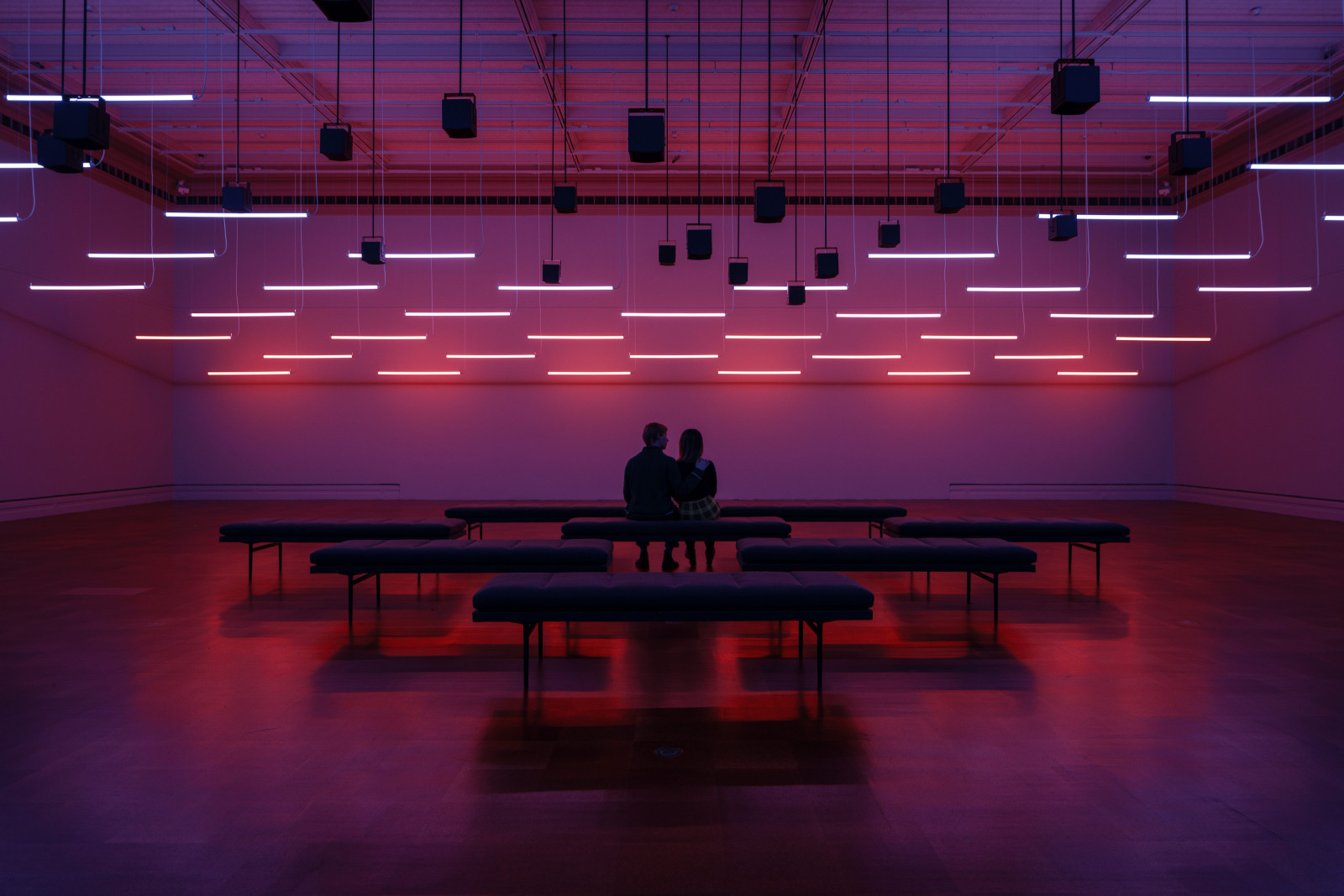The Risen Christ
The Risen Christ
Artist
Andreas Frosch
(German, active ca. 1517-1520)
Place of OriginGermany, Donauworth
Dateca. 1520
Dimensions48 × 17 1/2 × 10 in. (121.9 × 44.5 × 25.4 cm)
MediumLimewood with polychromy
ClassificationSculpture
Credit LinePurchased with funds from the Libbey Endowment, Gift of Edward Drummond Libbey
Object number
2018.33
On View
Toledo Museum of Art (2445 Monroe Street), Gallery, 16
DescriptionAn extremely well-preserved figure of the Risen Christ, fully carved in the round with much of its original polchromy. He has delicately painted facial features with large, brown eyes, a high forehead, and shoulder-length hair turning in deep curls down either side of His face. His bifid beard emanates from either side of the top lip and curls under itself slightly to echo a strong and angular jawline. Christ stands on an intricately carved base of undercut swirling patterns representing clouds, above a hexagonal frieze of interlocking fleur-de-lis foliage. He wears a vivid red mantle wrapped across his front in a complex network of crisp buckling folds and fastened by a wide gilded panel of material at the chest. The mantle’s blue lining is revealed by a swathe of folded cloth, which ripples up over Christ’s left arm and terminates in an airborne flourish near His shoulder, as though animated by the wind. He makes the sign of the Benediction with His right arm and extends His left around a flagstaff, now lost” [dealer’s Information Sheet]. In addition to the missing flagstaff (kreuzfahne), Christ originally had a nimbus affixed to the top of his head.
Label TextFully carved in the round, this figure has much of its original polychrome (multicolor paint), in particular the well-preserved face with its large brown eyes, high forehead, and shoulder-length hair. Christ’s right hand is raised in a sign of benediction, whereas his left hand once held a flagstaff, now missing, symbolic of his rising from the dead. he also originally would have had a halo affixed to the top of his head. This sculpture, as well as another German work of the same era, today in the collection of the Louvre in Paris, are thought to have been centerpieces of dramatic liturgical performances. After being brought into a church in a formal procession, such a carving was then elevated by ropes or chains through the nave and into the roof, thereby re-enacting Christ’s Resurrection and Ascension. Symbolically alluding to this, in this sculpture Christ stands on an intricately carved base of undercut swirling patterns representing clouds, with fleur-de-lis foliage below. The sculpture is attributed to Andreas Frosch on the basis of stylistic similarity with a group of carvings for a church in Donauwörth, Bavaria.Published ReferencesBergbau- und Gotikmuseum Leogang, Gotiksammlung Rudolf Leopold, Exh. Cat., Leogang, 2011, no. 49, pp. 160-16.
Of Earth and Heaven: Art from the Middle Ages, dealer exh. cat., New York, Luhring Augustine, 2018, no. 27.
Exhibition HistoryLeogang, Bergbau-und Gotikmuseum, Gotiksammlung Rudolf Leopold, 2011.New York, Luhring Augustine, Of Earth and Heaven: Art from the Middle Ages, 2018.
Mid- to late 4th century CE
about 1500
5th Dynasty (2498–2345 BCE)
5th Dynasty (2498–2345 BCE)
about 15 BCE - 25 CE (Roman, Augustan)
Hadrianic (about 130 CE)

Membership
Become a TMA member today
Support TMA
Help support the TMA mission
















